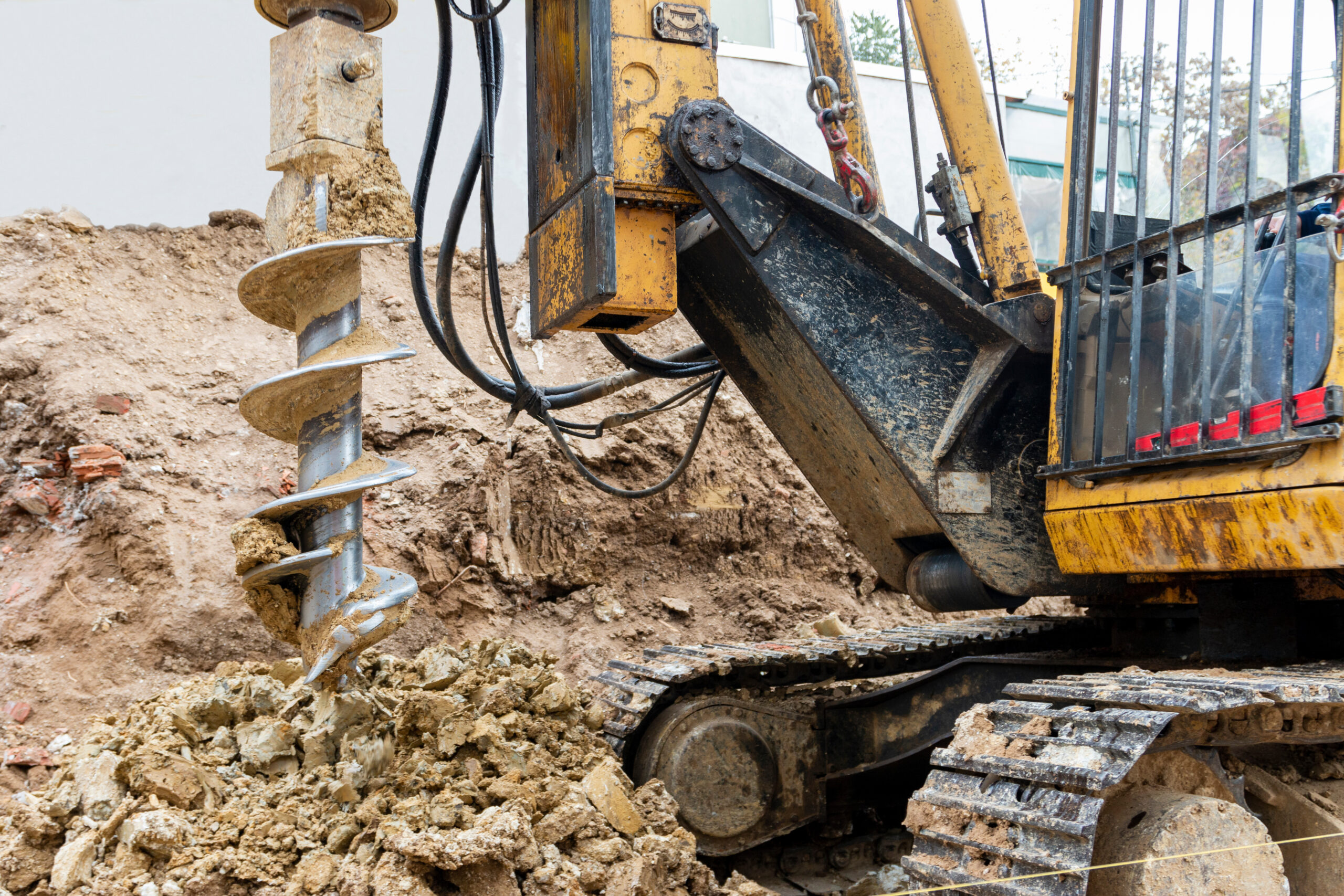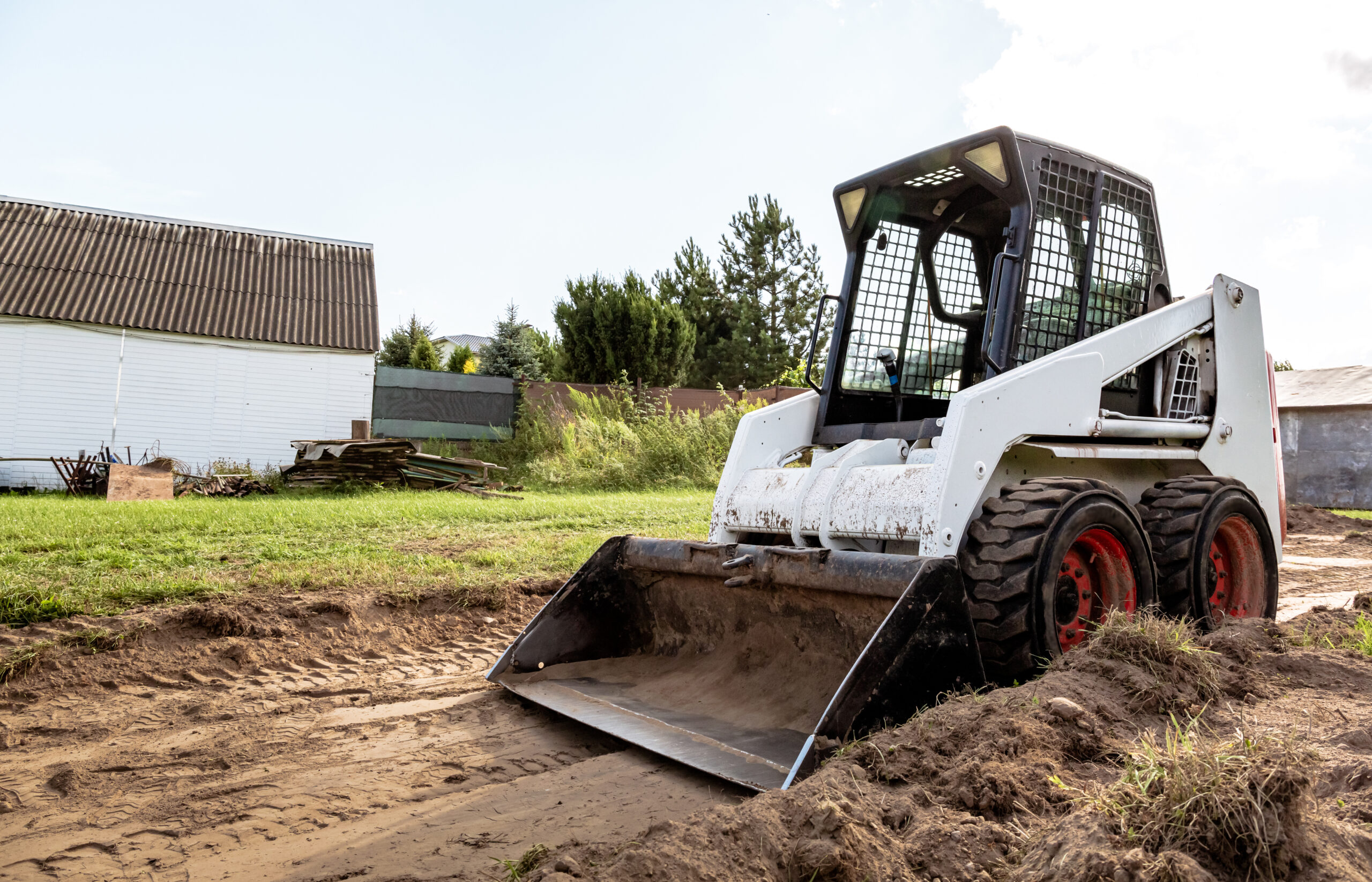A skid steer without attachments is like a Swiss Army knife without blades—useful, but nowhere near as versatile as it could be. And when it comes to digging precise, clean-cut holes with minimal effort, an auger attachment – sometimes called an auger bit – is one of the most practical investments you can make.
Whether installing fences, planting trees, drilling footings, or even mixing cement, the right auger attachment will save you time, money, and a lot of back-breaking labor. But with so many options on the market, how do you choose the best one for you?
Here’s everything you need to know before buying an auger attachment for your skid steer.
How a Skid Steer Auger Works
A skid steer auger is a powerful drilling attachment that mounts to your machine’s hydraulic system. It operates like a giant drill bit, twisting into the ground and pulling up soil as it digs. The key components of a skid steer auger include:
- Auger Drive Unit – Converts hydraulic power into rotational force.
- Auger Bit – The cutting tool that drills into the ground.
- Hydraulic Motor – Powers the attachment, with flow rate and pressure affecting speed and torque.
- Mounting System – Connects the auger to your skid steer’s universal quick-attach coupler.
An auger’s effectiveness depends on matching its hydraulic requirements with your skid steer’s capabilities—so let’s start there.
1. Know Your Skid Steer’s Hydraulic Flow and Pressure
Before buying an auger, you have to check your skid steer’s hydraulic specifications. Here’s why:
Hydraulic Flow (GPM – Gallons Per Minute)
- Controls rotation speed.
- Higher flow = faster drilling.
- This means that a high-flow auger will be useless if your skid steer has low GPM.
Hydraulic Pressure (PSI – Pounds Per Square Inch)
- Determines torque (digging power).
- More PSI = stronger penetration into hard ground.
How to Match Flow and Pressure to Your Auger:
- Standard-flow skid steers (10-20 GPM) need standard augers.
- High-flow skid steers (20-40+ GPM) can handle heavy-duty augers for rock and frozen ground.
Pro Tip: Running a high-flow auger on a low-flow skid steer will result in weak performance, while overpowering a standard auger with too much flow can damage the drive unit.
2. Choose the Right Auger Drive Type
Skid steer augers come in three drive types, each suited for different jobs:
Direct Drive (Light Duty) – Best for: Loose soil, sand, and general-purpose digging.
- Pros: Simple design, lower cost.
- Cons: Lower torque, struggles in rocky or hard ground.
Chain Drive (Mid-Range) – Best for: Clay, dirt, and moderate-duty drilling.
- Pros: More power than direct drive, still budget-friendly.
- Cons: Requires occasional maintenance (lubricating the chain).
Planetary Drive (Heavy Duty) – Best for: Hard-packed soil, frozen ground, rocks, and deep drilling.
- Pros: High torque, maximum durability, minimal maintenance.
- Cons: Higher price tag, but worth it for demanding jobs.
Pro Tip: A planetary drive is the way to go if you’re regularly working in tough soil conditions or deep drilling applications.
3. Pick the Right Auger Bit for Your Job
Auger bits come in different sizes and cutting designs. Choosing the right one depends on what you’re drilling into and how deep you need to go.
Bit Diameters
- 6”-12” bits – Ideal for fence posts, signposts, and tree planting.
- 14”-24” bits – Best for footings, piers, and utility poles.
- 30”+ bits – Heavy-duty industrial jobs, foundation drilling, or piling work.
Bit Length
- Standard bits dig about 4 feet deep.
- Extensions can add another 2-6 feet, depending on the job.
Bit Types
| Bit Type | Best for |
| Standard Dirt Bit | Loose soil, sand, clay |
| Rock Auger Bit | Rocky terrain, frozen ground |
| Tree Auger Bit | Planting trees, landscaping |
| Stump Planer | Grinding and removing stumps |
| Cement Mixing Auger | Mixing and pouring concrete |
Pro Tip: If you’re working in mixed terrain, consider buying multiple auger bits to swap out as needed.
4. Don’t Overlook These Key Features
When comparing auger attachments, these details can make a big difference in performance and longevity:
✔ Hex vs. Round Shaft:
- Hex shafts (2” or 2 9/16”) provide better torque transfer and are more durable.
- Round shafts can slip under heavy loads but are suitable for light-duty use.
✔ Replaceable Cutting Teeth:
- If you’re drilling into rock or compacted soil, choose a bit with carbide teeth—they last longer and cut more efficiently.
✔ Heavy-Duty Flighting:
- Augers with double flighting move material faster and drill cleaner holes.
✔ Warranty and Brand Reputation:
- Stick with well-known brands like Digga for proven reliability and warranty support.
5. How Much You Should Expect to Pay for Your Skid Steer Auger
The price of a skid steer auger varies based on size, drive type, and brand. Here’s a rough pricing guide:
| Auger Type | Typical Price Range (USD) |
| Standard Dirt Bit | $300 – $800 |
| Rock or Heavy-Duty Bit | $800 – $2,500 |
| Direct Drive Auger | $1,000 – $2,500 |
| Chain Drive Auger | $2,500 – $4,500 |
| Planetary Drive Auger | $4,500 – $7,000+ |
Pro Tip: Buying used augers can save money, but always check for worn gears, damaged flights, and leaking hydraulics before transacting.
Final Thoughts: How to Make the Right Choice
Before you buy, ask yourself these three questions:
- Does my skid steer have enough hydraulic power for the auger I want?
- Am I buying the right drive type for my soil conditions?
- Do I need multiple bits for different jobs?
The right auger turns your skid steer into a hole-drilling powerhouse—saving you hours of labor while ensuring precision and efficiency.
If you’re in the market for high-quality augers, check out our industry-trusted Digga auger attachments today and get the best fit for your machine!
The Forge Team


